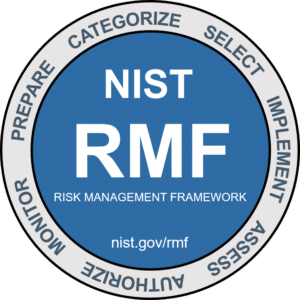Cybersecurity risk management refers to the process of identifying, analyzing, evaluating, and responding to your organization’s cybersecurity threats. The process takes the idea of real-world enterprise risk management and applies it to the cyber world. This strategy, in turn, helps enterprises identify risks and vulnerabilities and apply comprehensive security solutions and administrative actions to keep the entire organization protected.
A cyber risk assessment is the first step of any cybersecurity risk management process. This step would give a business owner an overview of the threats that could endanger their company’s cybersecurity, as well as their severity. NIST defines cyber risk assessments as tasks used to identify, estimate, and prioritize risk to organizational operations, organizational assets, individuals, and other organizations, resulting from the operation and use of information systems.
Our previous post, titled “Cybersecurity Risk Assessment – Made Easy,” notes that failing to manage cyber risks provides cybercriminals with opportunities for launching massive cyber attacks. Fortunately, a cybersecurity risk assessment allows a business to detect existing threats. A cyber risk management program chooses how to prioritize and react to those risks based on an organization’s risk appetite.
Risk management has existed since businesses started owning assets that needed to be secured. The study of risk management began after World War II and has long been associated with market insurance to protect businesses and people from various losses caused by accidents.
Studies show that cybersecurity research started in the late 1960s and has continually evolved under different names, such as computer security and information security. A paper on risk management and the cybersecurity of the U.S. Government published by NIST states that since 1985, government cybersecurity policy and practice have been based on risk management principles.
To defend an organization from cybersecurity attacks that can compromise systems, steal sensitive data, and damage an organization’s reputation, I.T. agencies use a combination of techniques, tools, and user education to identify and manage security risks. The need for cybersecurity risk management grows in tandem with the number and severity of security breaches and cyber-attacks.
What are the Impacts of Cyber Risks?
The danger of loss or damage resulting from communications systems or an organization’s information is an example of cyber risk. Cybersecurity risk is not limited to data loss or monetary loss; it also includes copyright theft, decreased business productivity, and reputation damage.
Cybersecurity risks can expose any organization, and they can come from within or outside the organization. Cybersecurity can be malicious or unintentional insider actions.
Security incidents’ costs range from monetary losses due to operational disruptions and regulatory fines to intangible losses such as a loss of customer confidence, reputational harm, or a change in leadership.
Cyber risks often result in a substantial financial loss arising from corporate information theft, loss of financial data, theft of money, disruption of business operations, and loss of business contracts. Besides, they can damage a business’s reputation and erode customer’s trust, potentially leading to loss of clients and reduction in sales and profits. Currently, the average cost of a data breach is $3.86 million.
Understanding Cybersecurity Risk Assessment
Cybersecurity risk assessment is the process of determining, reviewing, and evaluating risks to ensure that the chosen cybersecurity controls are enough for a business’s cyber threats.
Lack of proper risk assessment practice to help in cybersecurity decision-making results in resource, effort, and time wastage. Now and then, organizations put measures in place for events that might happen but have no potential impact on a business while undermining or dismissing risks that might cause significant trouble.
Meanwhile, many best-practice frameworks, standards, and rules, such as the General Data Protection Regulation (GDPR) and Data Protection Act (DPA) 2018, require risk assessments.
How do you conduct a cybersecurity risk assessment?
Undoubtedly, a cyber-attack could damage the data assets described in a cybersecurity risk assessment. These assets include hardware, systems, laptops, customer data, and intellectual property. The cyber risk assessment process identifies threats that could jeopardize those assets. After the risk analysis, organizations select controls to address the identified risks. The selected controls should address risks such as data leakage, insider threats, hacking, and potential risks from third parties.
Continuous monitoring and reviewing the risk environment is essential for detecting any changes in the organization’s context and keeping track of the entire risk management process.
A company can put a risk management system in place by first identifying which assets it wants to secure and classify. There is no one-size-fits-all strategy, as per NIST’s Framework for Improving Key Infrastructure Cybersecurity. Different businesses face different risks due to their nature of operations and technological infrastructures. Regulatory compliance and industry issues in the financial services and healthcare sectors, for example, must be resolved for the most valuable products, such as customer data.
One cybersecurity framework to conduct risk assessments that has been adopted by the US Government is the Risk Management Framework (RMF). There are seven steps in the RMF process. These steps ensure that systems have an acceptable level of security controls in place before authorization to operate is granted. These steps are:
All activities which may present a cybersecurity risk should be carefully documented and executed. Company best practices should steer corporate cybersecurity initiatives, as defined by ISO/IEC 27000 family.
NIST Risk Management Framework
- Prepare
- Categorize
- Select Controls
- Implement Controls
- Assess Controls
- Authorize the system
- Continuous Monitoring

Cybersecurity Risk Management Process
Begin by constructing a cybersecurity strategy from various business areas to decide the company’s desired risk outcomes. Security teams can use new technologies that can get and map data across the business enterprise. They can make better decisions about controlling and minimizing their data risk footprint after mapping their data.
Even with specialized training, an effective cybersecurity program, and a robust cybersecurity culture, confidential data, such as data hidden within spreadsheets, rows, and notes included long email threads or employee presentations, can leave a company by accident. Scanning the company for confidential data in transit and then eliminating any data that doesn’t exist reduces the risk of private information being lost by a large margin.
To kickstart your risk management process, the Capability Maturity Model, which has five levels, can be used to direct your company’s risk management plan. A risk management maturity model is an excellent way for an enterprise to identify where they are, compare the current state to where they want to be to derive full benefit and discuss the value and cost of further investment in managing cyber risks.
Once the desired risk exposure state has been decided, businesses inspect the technology infrastructure to create a foundation for the current risk assessment and what the company should do to move from the present state to the correct risk exposure position.
The next stage involves examining the business technology infrastructure once the desired risk exposure state has been determined to establish a foundation for the current risk state and what the company must do to move from the present state to the desired risk state.
To make a system fully secure is to make it entirely impossible for anyone to access it. The more limited a system is, the more certain it may be for authorized employees to fulfill their duties. When certified users cannot access the data or methods they need to perform their duties, they may attempt to find get-throughs that affect systems.
How Can Organizations Reduce Identified Cyber Risks – Risk Reduction Measures
Encrypt all sensitive and confidential information, both at rest and in transit. Encryption isn’t a new characteristic, but it needs to be carried out in a presentable and strategic manner to secure data from attackers and insider risks. Advanced key management, granular role-based access, granular task separation, standards-based cryptography, and state-of-the-art algorithms are among risk management encryption features.
Although data encryption protects against external breaches, it is ineffective against data theft within the company. Insiders with access to sensitive information are almost certainly in possession of the details needed to decrypt them. As a result, firms must take precautions to prevent trusted insiders from deleting data from the systems.
Additionally, businesses must balance data security and data sharing capabilities. Businesses must hide classified data, such as names and credit card numbers, from queries and updates.
Aside from technical considerations, ongoing security education and training are essential. Many threat actors have moved on from Trojan horse, malware, and other viruses to phishing and spear phishing. They attempt to gain identities or sensitive company data from people with administrator privileges.
According to the National Institute of Standards and Technology, companies should include security information in their policies so that workers and business associates are aware of what is required.
Since being online raises most risks of a company’s cybersecurity, an incident response schedule must be in place to evaluate what can be done in the event of specific incidents. If there is an increase in hacker attempts at the company or the industry, more stringent security measures will be needed. If a data breach happens, the company should have comprehensive plans in place, comprising contact details for relevant authorities, stakeholders, and consultants, a checklist of action items, and a strategic communications response, among other things. NIST provides a specific incident response activities plan.
Businesses can consider these other cybersecurity measures to reduce cyber risks:
●Minimize the number of gadgets that have access to the internet
●Install computer Network Access Controls
●Minimize individuals with admin details and other administrator control rights
●Phase-out older operating systems that have limitations (i.e., devices running on older O.S. and Windows XL no longer has the support)
●Automatically download and apply operating systems patches
●Install antivirus software and other security programs
●Require two-factor verification when accessing systems files and other application components
●Implement network firewalls, intrusion detection and prevention systems, and VPNs
Conclusion and Key Takeaways
Technologies such as endpoint protection, firewalls, threat intelligence, intrusion prevention, and network access controls are just a few that organizations should include in any comprehensive security strategy. Apart from these security measures, businesses should make a cybersecurity investment in cyber risk management, which is a continuous process. A company should maintain regular, periodic assessments to look for new threats and risks. This process helps determine how to solve cybersecurity threats to keep a business’ projectile motion at the required level after obtaining a preliminary risk assessment and progressing from its existing risk perspective to the appropriate risk posture.
Key takeaways
●Cybersecurity risk management is the process of identifying, analyzing, evaluating, and responding to your organization’s cybersecurity risks
●Cyber risk is the risk of loss or damage resulting from communications systems or an organization’s information system, and it can be internal or external
●Cyber risks cause monetary losses due to operational disruptions and regulatory fines, and reputational damage that results in loss of customer confidence, reduction in profits, and leadership change
●Cybersecurity risk assessments determine, review, and evaluates cyber risks. The strategy ensures that the cybersecurity controls chosen are adequate for the threats facing a business
●Information encryption and the use of security solutions are recommended can secure information from attackers and insider risks. Examples of reliable security solutions include endpoint protection, firewalls, threat intelligence, intrusion prevention, and network access controls
